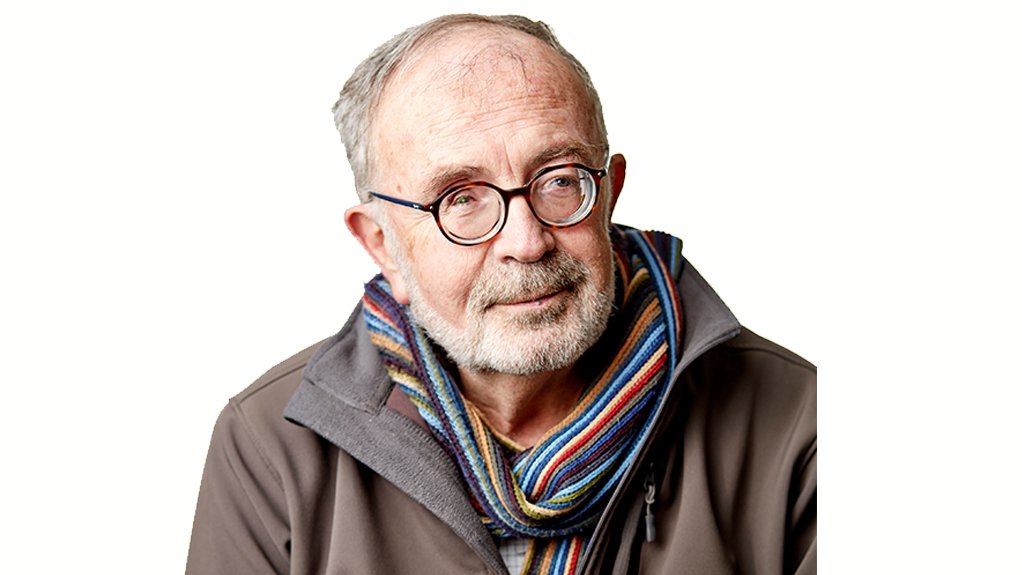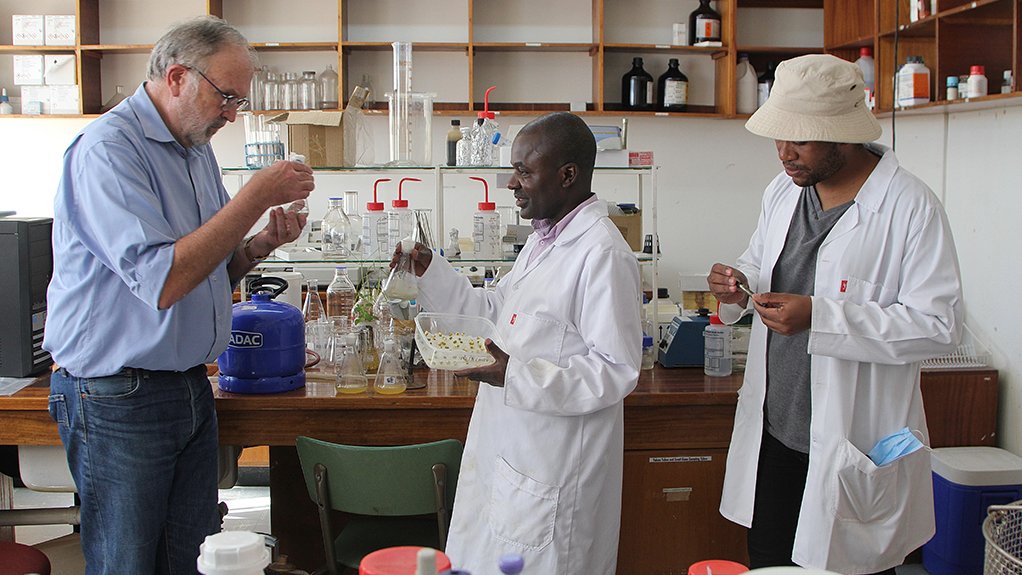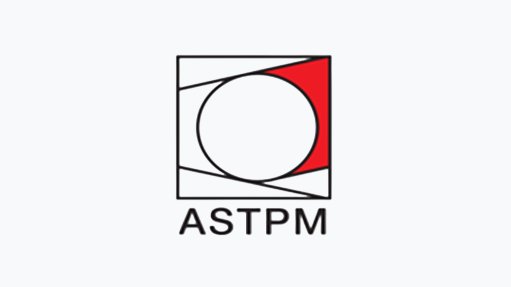EBRU’s systems to be used commercially



KEITH COWAN Two nature-based systems can potentially treat waste water more efficiently while minimising negative environmental impacts
Photo by Dirk Pieters
RESEARCH AND EVALUATION The EBRU evaluated both systems over a three-year period to confirm all the design parameters that have been used
Photo by Chris Marais
Rhodes University’s Institute for Environmental Biotechnology’s (EBRU’s) ongoing research on nature-based water treatment solutions has showcased two possible systems for commercial use that can potentially treat waste water more efficiently while minimising negative environmental impacts.
The EBRU’s focus on water and wastewater treatment is only on passive ‘nature-based systems’ involving algal-based wastewater treatment.
In its research, two nature-based systems – based on the integrated algal pond system (IAPS) concept – have been used in real time and at a demonstration scale.
The two systems are municipal sewage treatment using a complete IAPS and high-sulphate mine wastewater treatment using integrated suspended sulfidogenic biofilm reactors coupled to algal high-rate oxidation.
The EBRU evaluated both systems over a three-year period to confirm all the design parameters that have been used, as well as the kinetics of the process and the quality of the effluent that emerged.
Using a successional sequence of higher organisms, through plants, to lower organisms including microalgae and bacteria, polymers and molecules, enabled the institute to understand how the environment might interact with implemented technology in a particular regional geography.
The platform, the IAPS, is a basic water treatment system that was implemented in Makhanda, previously known as Grahamstown, in the Eastern Cape, in the form of an algae pond system.
This demonstration-scale system was brought to South Africa in the 1990s and has been used for various purposes.
The ‘suspended sulfidogenic biofilm-coupled IAPS’ is similar to a rotating biological contactor process for the bioremediation of sulphates in mine wastewater by bespoke sulphate-reducing and -oxidising bacterial biofilms attached to carbon-fibre scaffolds in series.
The EBRU chose to concentrate on these two water treatment systems and merged environmental aspects with technology aspects by reevaluating the technologies for their bespoke purposes to move them into a more environmental framework.
“In both processes, the final effluent to be discharged to the environment is essentially ‘polished’ by the integration of a suite of naturally selected microalgae and bacteria – collectively called microalgal-bacterial aggregates – that arise as a consequence of the local geography and are, therefore, region- and, to some extent, process-specific,” says EBRU director Professor Keith Cowan.
These microbes readily coalesce to form flocs that are easily separated from the treated water by gravity settling, he adds.
EBRU reevaluated the design and kinetic parameters of IAPS for municipal wastewater treatment over several years using the Department of Water and Sanitation water quality parameters as a guide.
The purpose was to determine and quantify the co-products that such a process can deliver through circular economic approaches using nature-based technologies.
Preliminary results using a 500- person equivalent system revealed that the process can produce 28 000 m3/y of treated water for recycling and reuse (equivalent to 56 m3/y a person), 1 880 kg methane-rich biogas (equivalent to 55 kWh/y of electricity a person) and more than 3 t dry weight biomass.
A life-cycle assessment modelling of energy flows and greenhouse-gas emissions revealed that an equivalent commercial system would yield 0.16 t carbon dioxide (CO2) per 1 000 m3 of wastewater treated confirming a technology to simultaneously benefit people and nature.
The 0.16 t CO2 value implies net negative CO2 emission indicating a technology with an ability to mitigate climate change.
The EBRU has since further elaborated the process, to include production of 500 m3/d of a high nitrogen-containing liquid effluent (>1 g/ℓ) with the potential for use as organic fertiliser.
Cowan says the weights and balances within the system generate several by- products that, when implemented correctly, can generate a carbon-negative design and beneficiated by-products.
In the wastewater sector, nature-based technologies include constructed wetlands, the reuse of greywater through gravity, sand and gravel filters, as well as integrated algal-based systems.
Cowan explains that when a technology solution is implemented, it should – as much as possible – mimic the surroundings to benefit people and nature.
Therefore, the design for implementation should feed off of and into the surroundings with minimal disruption.
Nature-based solutions should involve very little, if any, concrete, and minimal, but preferably no electromechanical operations.
However, this is not always possible, he adds.
An example of nature-based solutions is wetlands, which can absorb polluted water, treat the water over a period and generally return good quality water, says Cowan.
Wetlands also deliver a rich and biodiverse environment where various organisms can feed, reproduce and live.
Grey water management is another potential nature-based solution.
Instead of servicing wastewater treatment plants that use large amounts of electricity, grey water can pass through rocks and gravel filters.
The water can then be migrated to the built environment to green the surroundings that include sidewalks, pot plants, decorative water fountains and koi ponds.
Cowan says there are ways of using this water on site without reticulating it “kilometers away to massive facilities, which can become damaging in the medium to long term.”
Article Enquiry
Email Article
Save Article
Feedback
To advertise email advertising@creamermedia.co.za or click here
Comments
Press Office
Announcements
What's On
Subscribe to improve your user experience...
Option 1 (equivalent of R125 a month):
Receive a weekly copy of Creamer Media's Engineering News & Mining Weekly magazine
(print copy for those in South Africa and e-magazine for those outside of South Africa)
Receive daily email newsletters
Access to full search results
Access archive of magazine back copies
Access to Projects in Progress
Access to ONE Research Report of your choice in PDF format
Option 2 (equivalent of R375 a month):
All benefits from Option 1
PLUS
Access to Creamer Media's Research Channel Africa for ALL Research Reports, in PDF format, on various industrial and mining sectors
including Electricity; Water; Energy Transition; Hydrogen; Roads, Rail and Ports; Coal; Gold; Platinum; Battery Metals; etc.
Already a subscriber?
Forgotten your password?
Receive weekly copy of Creamer Media's Engineering News & Mining Weekly magazine (print copy for those in South Africa and e-magazine for those outside of South Africa)
➕
Recieve daily email newsletters
➕
Access to full search results
➕
Access archive of magazine back copies
➕
Access to Projects in Progress
➕
Access to ONE Research Report of your choice in PDF format
RESEARCH CHANNEL AFRICA
R4500 (equivalent of R375 a month)
SUBSCRIBEAll benefits from Option 1
➕
Access to Creamer Media's Research Channel Africa for ALL Research Reports on various industrial and mining sectors, in PDF format, including on:
Electricity
➕
Water
➕
Energy Transition
➕
Hydrogen
➕
Roads, Rail and Ports
➕
Coal
➕
Gold
➕
Platinum
➕
Battery Metals
➕
etc.
Receive all benefits from Option 1 or Option 2 delivered to numerous people at your company
➕
Multiple User names and Passwords for simultaneous log-ins
➕
Intranet integration access to all in your organisation
















